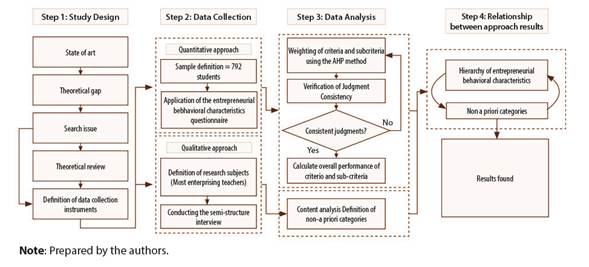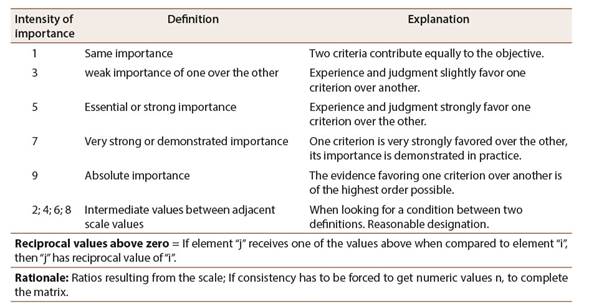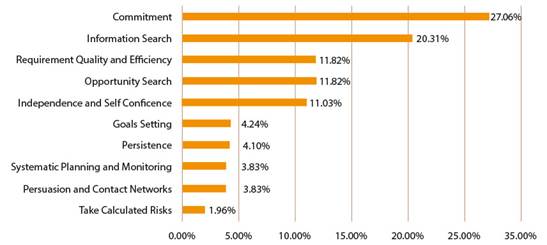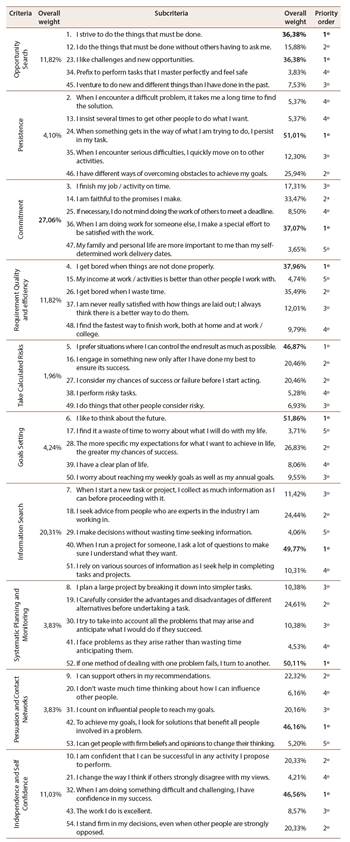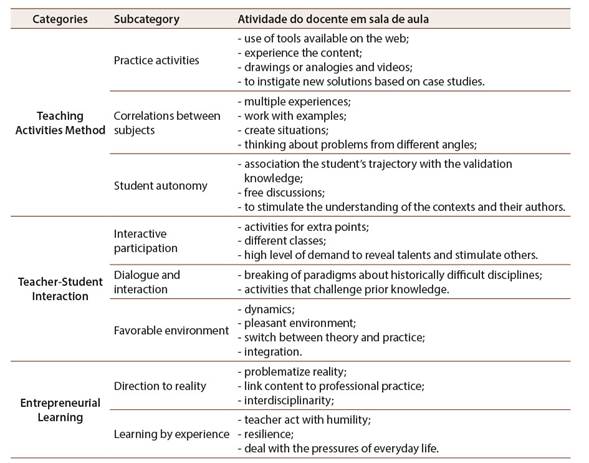Introduction
Entrepreneurial education is related to the innovative mode of pedagogical practices used in knowledge transfer, helping in the development of differentiated skills and knowledge (Ogbari et al., 2019).
Moreover, this theme is becoming increasingly focused, leading different researchers to study entrepreneurship education in different contexts such as: real project-based learning models, reputation of higher education institutions, project-based learning as a tool for the formation and development of entrepreneurial skills of students, as well as to analyze the moderating role of entrepreneurial education in the analytical thinking of emotional competences and its influence, in particular, on the formation of entrepreneurial intentions of college students (Fernández Pérez et al., 2019; Ogbari et al., 2019).
Another form of entrepreneurial education influencing behavior is related to the identification of entrepreneurial characteristics. Knowing them to improve them becomes an efficient way to develop the individual, stimulating him to a behavior similar to others, in which Stanković they have already achieved success in their activities (Filion, 1999).
In this sense, it is understood that entrepreneurial behavior is linked to the way in which individuals perform their activities, understanding that entrepreneurial education can contribute to the development of this behavior (Awais Ahmad Tipu, & Manzoor Arain, 2011; Bhat, & Singh, 2018; Feng et al., 2018).
Thus, the search for the development of entrepreneurial behavior has led to research on different ways of working towards this theme. This is based on studies by Hendieh et al. (2019) that shed light on ''students' attitudes toward entrepreneurial behavior and the importance of university education (for) their future … career, … exploring and analyzing the factors that (may) influence the behaviors and attitudes of (college) students (p. 1).
In this bias, it is understood that the development of entrepreneurial education should be taken into account including it in the context of universities, as different studies have elucidated, since higher education institutions have a fundamental part in the development of knowledge, stimulating economic progress. from a country (Singh et al., 2012).
Thus, this article seeks to contribute with literature on the proposition of pedagogical methods that induce undertaken attitudes-didactic activities employed by teachers that enable the development of entrepreneurial behavioral characteristics of undergraduate students. It served as a suggestion of tools for instrumentalization of professionals working in the field of education, providing didactic activities aiming the bias of entrepreneurial education. To this end, the following research question was formulated: What do entrepreneurial education activities influence the entrepreneurial behavioral characteristics of undergraduate students at a federal higher education institution?
Therefore, the objective of the present study was to identify the activities developed by the teachers of a Brazilian public higher education institution by analyzing the influence of these activities on the Entrepreneurial Behavioral Characteristics (EBC's) of undergraduate students. The research was justified by the contribution of relevant information about entrepreneurial education and the influence of the activities performed by teachers in the context of the classroom that in fact provides positive effects on the entrepreneurial behavior of students.
Theoretical reference
Entrepreneurial Education
Entrepreneurial education as well as entrepreneurship has been a focus over time, given its importance for the development of both students and economic environment in which they reported themselves and also the education itself (Saiymova et al., 2019).
In addition, due to this strong promotion, different ways of providing access to entrepreneurial education have been put into practice, such as the study by Schumann (2019), who proposed a methodology for using a library of audio tapes. with a series of guest speakers in a virtual way, providing greater diversification and contact of students with entrepreneurs, assisting them in building knowledge aiming entrepreneurship.
In this bias, different studies in different contexts have shown the concern to generate entrepreneurial education in universities and schools, this fact is based on the researchers conducted by Abdramanova et al. (2019), Wang et al. (2019), where the first verified methods for improving the quality of entrepreneurial education for higher education in the Republic of Kazakhstan. In the second study, the authors sought different insights from foreign universities that are a reference in entrepreneurial education, to find ways to improve the quality of this theme in Chinese universities, since as they mentioned, China is still in the exploratory phase regarding entrepreneurial education.
In this sense, it is perceived in different studies over time, the space conquered by entrepreneurial education, where more and more research has been helping to make this theme more consistent, contributing to the social, economic and personal development of students, as well as the practices related teaching (Fernández Pérez et al., 2019; Helms et al., 2014; Jussibaliyeva et al., 2019; Jónsdóttir, & Macdonald, 2019; Kusmintarti et al., 2016; Panfilova et al., 2019). Thus, entrepreneurial education can play a relevant role in the development of entrepreneurial behavior, contributing to the improvement of entrepreneurial behavioral characteristics.
Entrepreneurial Behavior
Behavior can be defined as an individual's way of acting, however when referring to entrepreneurial behavior, it is defined as a set of activities that entrepreneurs perform (Awais Ahmad Tipu, & Manzoor Arain, 2011).
Given the inherent aspects related to entrepreneurial behavior, different studies have shown its importance for the performance of organizations as well as in development and innovation (Kallmuenzer et al., 2019; Nitu-Antonie et al., 2017; Tang et al., 2019).
Moreover, Kirkley (2016) brings a relationship between entrepreneurial behavior and deep beliefs, stating that these influence behaviors, also emphasizing that independence, creativity, ambition and boldness are critical factors to motivate entrepreneurial behavior.
Yaseen et al. (2018) bring their study a relevant reflection, which covers the question of how farmers perceived and exploit business opportunities for promoting entrepreneurship in agriculture in developing countries, pointing out that Intentions driven through convenience, viability, and optimism can make it a predictor of opportunity recognition and being an entrepreneur.
It can be seen from different studies that entrepreneurial behavior can assist in economic development (Farooq, 2018), in the formation of new business and with different concepts (Gillin et al., 2019), as well as in education (Fayolle et al., 2006; Kirkley, 2017; Higgins et al., 2019).
According to Suedekum, & Miller (2018), entrepreneurship is an access key to identify opportunities, invest resources, leverage changes capable of generating positive impact. The fact is that the actors in this process are visionary, questioning, and risk-taking individuals with special characteristics. For this reason, authors such as Silva et al. (2019) highlighted that such characteristics deserve to be studied. So, the next topic is about entrepreneurial behavioral characteristics.
Entrepreneurial Behavioral Characteristics
Studies on behavioral characteristics of entrepreneurs emerged in the behavioral era, followed the evolution of entrepreneurship, and developed over the years by studying the profile of successful individuals to identify what makes them so different. One of the most cited authors who worked hard on the topic was David McClelland (Clemente, & de Almeida, 2013; Filion, 1999).
There have been numerous studies on entrepreneurial behavioral characteristics over the last few years, identifying which characteristics would require further encouragement, especially in undergraduate students, pointing to the urgency of active classroom methodologies. Such studies demonstrated the reaffirmation in the literature about the effectiveness of this tool, indicating to each organization, which conducts research in situ, the possibility of stimulating the potential of its own, whether they have low potential but still have the intention or even improve those that are already entrepreneurs and deserve encouragement (Clemente, & de Almeida, 2013; Filion, 1999; Iizuka, & de Moraes, 2014).
Filion (2000) believes that studying successful individuals is an appropriate activity to encourage those who do not have natural characteristics. By making comparisons, it is possible to infer assessments of the urgency of development, in which the students themselves evaluate their potentialities or weaknesses by correcting them when necessary, equating them and improving them to successful individuals.
McClelland's (1972) orientation on characteristics is based on the Theory of Needs; ie, it related the entrepreneur to the need for success, recognition and the desire for power and control, defining the ''need for fulfillment'' as a human will to achieve overcome and differentiate, encompassing a set of psychological and behavioral characteristics such as initiative and the desire to be recognized (Balconi, & Minello, 2018).
The ten characteristics referred to by McClelland (1972) are subdivided into three categories: Planning, which included search for opportunities and initiative, persistence, commitment, quality and efficiency requirement, taking calculated risks; achievement covering systematic goal setting, information seeking, planning and monitoring; and power, which included Persuasion and Networking, and Independence and Self-Confidence (McClelland, 1972). From these dimensions it is possible to measure individuals and establish a degree of relationship with the entrepreneurial profile indicating potential aspects for development in a specific way.
Method
The research was developed using the mixed methods approach, characterized by the collection of qualitative and quantitative data, applied nature based on empirical research. For the purpose of this research - to identify the activities developed by the professors of a Brazilian public higher education institution by analyzing the influence of these activities on the Entrepreneurial Behavioral Characteristics (EBC's) of undergraduate students, the methodological flow was designed with the study design and the definition of the instruments. Afterwards, quantitative data collection from the measurement instrument (Mansfield et al., 1987) and qualitative from the semi-structured interviews. From this, the analysis of all the data was carried out, where the quantitative data were analyzed by the AHP method and the interviews by the content analysis. And, for the analysis the results, the relationship between both results was carried out, in which the activities that are capable of influencing certain characteristics were identified. The methodological flow presented in Figure 1 was drawn.
The instrument is able to measure entrepreneurial behavior through the characteristics of the individual, based on 55 statements. Composed by the following dimensions: search for opportunities and initiative; persistence; commitment; quality and efficiency requirement; take calculated risks; setting goals; information search; systematic planning and monitoring; persuasion and networking; independence and self-confidence, using a five-point Likert scale under the gradation: 1- never, 2- rarely, 3- sometimes, 4- usually and 5- always.
For this research population, 845 undergraduate students regularly enrolled in the study's focus institution - the student population - were excluded from the internship situation because they were not physically in the institution during the semester of collection. According to the guidance of Araújo et al. (2012), prior to performing multivariate analysis, data need to be examined for better predictive power and the quality of the results generated. In this case we examined the presence of atypical observations (Outliers) and missing data (Missing values), so, in the end, worked with 792 valid questionnaires, 93.72% of Campus students. Statistically, the author Hair et al. (2009) states that the minimum sample size should be five to ten times larger than the number of variables to be analyzed. If we considered the number of variables in the questionnaire used, 55 assertions, the size of the statistical sample would be 550. Therefore, the sample collected from 792 exceeded the statistical sample.
The data analysis of the quantitative approach was used the method of hierarchical process analysis (AHP), proposed by Saaty (1980), evaluated the priorities of the criteria and alternatives. The AHP method consisted in prioritizing, through expert evaluation, criteria, sub-criteria and alternatives seeking to assist in decision making, being used in different studies, from the most varied areas of knowledge (Rafiee, & Abbasian-Naghneh, 2019; Stanković et al., 2019). Table 1 shows the scale formulated by Saaty presenting the data and their respective levels of importance.
After peer evaluation using the values shown in Table 1, the consistency of the information collected is analyzed using the calculations of consistency ratio (RC), consistency index (CI) and random index (RI). according to Equation 1.
Moreover, for the development of the calculation, it is necessary to stipulate the CI, made by Equation 2, where the λmax is result of multiplying the sum of the columns of the comparison matrix and the priority vector.
Regarding the random index, it was stipulated by Saaty, and the value to be considered is that which concerns the size of the evaluation matrix, as shown in Table 2.
According to the methodological flow, the consistency of the judgments is verified, if the steps are consistent, otherwise the weights are evaluated again with the decision makers.
Qualitative research was used because it enables the researcher to observe in more detail the phenomenon and understand it in the context in which it occurs and is part (Godoy, 1995). While the quantitative approach, for the quality of being used in studies of large data clusters and demographic sets, starting from a context to be discovered and built from a social phenomenon (Hernández Sampieri et al., 2006; Minayo, & Sanches, 1993).
For the qualitative data survey, a semi-structured interview technique was performed, with a script of open and closed questions, aiming to raise complementary data, such as gender, age, vocational training, teaching time, and other 31 open-ended questions. in four blocks: about life history, professional career, teaching activities and entrepreneurial characteristics and attitudes. According to protocol, all interviews were recorded and only necessary interruption were performed by the researcher.
The definition of the research subjects used in the qualitative approach was performed through a secondary data collection, which collected information from the students to know which were the most ''distinct'' teachers in the classroom. Thus, after counting by frequency, the five (5) most distinct and differentiated teachers were defined in the students' perception to perform the interview. According to Eisenhardt, & Graebner (2007), qualitative studies that applied the interview technique may be considered technically appropriate when defining from 4 to 10 individuals to be interviewed.
The analysis of the data regarding the qualitative approach used the technique of content analysis, in which, after the fluctuating reading of the data and the creation of the interview protocol, the categories were not defined a priori, as they presented similarity in each other. statements of the teachers interviewed.
After analysis of both approaches, the data were related for purposes of verification of relationship and association of results, according to step 4 of the methodological flow (Figure 1).
Results analysis and discussion
Data analysis was carried out in two moments, quantitative analysis of students 'characteristics (EBC's) and qualitative analysis of teachers' activities.
The first moment, with the application of the questionnaires and the use of the AHP method, the most important constructs were obtained, that is, the entrepreneurial behavioral characteristics that most characterized the students during that research period, according Figure 2.
commitment was the criterion that obtained the highest priority, obtaining 27.06% in its overall weight, which indicated that this construct represents the greatest relevance from the perspective of the survey respondents - the students.
Commitment, according to the characteristics defined by McClelland (1972), is inserted in the Realization dimension and brings aspects of the individual's responsibility to the task and the team, such as worrying about the deadlines of the tasks under their responsibility; be faithful to the promises you make to others; Feel fulfilled by the satisfaction of the other, by performing the task under their responsibility.
Followed by the information search feature, which obtained 20.31% of global weight with the second highest relevance for students. According to McClelland (1972), this characteristic encourages the student to personally look for information that is available in their context, even seeking the help of specialists to obtain technical or commercial advice, and in the case of students, direct contact with professors.
Regarding the lowest scores, we have the characteristic of taking calculated risks, with only 1.96% of the global weight. This characteristic is directly related to analyzing risks cautiously, putting oneself in situations of moderate challenges and always evaluating the chances of success or failure, according to McClelland (1972). Entrepreneurs by nature, take high calculated risks and this characteristics with low weights among students, suggests that they still feel insecure even by the projections of the next steps after university, which usually tend to be doubtful and therefore developing this characteristic would increase their confidence levels to undertake in the future.
We also analyzed the questions of each construct, listing which were the most prioritized by them when answering the questionnaire. At this point it was possible to observe which questions the students prioritize regarding the entrepreneurial characteristic's context, more specifically what really matters to him when considering the ten dimensions specified by McClelland (1972). Importantly, all judgments had a consistency ratio below 10%, which indicated that the analyzes performed are consistent; and therefore, the results are valid (Abastante et al., 2019; Saaty, 1977; Saaty, & Ozdemir, 2003).
Thus, Table 3 shows, in general, the priorities found with the application of the AHP method, as well as the respective questions (sub-criteria). Although with a lot of information, it is believed to be important to present it for information purposes to those who wish to improve the development of students at that university, pointing out the specific items with urgency for improvement.
When analyzing the commitment factor that had the highest weight, question ''36'' was a priority with 37.07% of global weight, referring to its commitment to third parties. In the same way, with the second factor with the best weight, search for information, in which question 40 had the highest global weight, and also involves the relationship between the student and other people, ensuring compliance with the commitment made between them. Therefore, it can be inferred that students are oriented to fulfill their commitments taking into account the responsibilities assumed with other people.
And on the aspects that most need attention and development are related to encouraging students to perform risky tasks, to trace new paths and relinquish full control over all processes. Question 53, which had lower weights within the Persuasion and Contact Networks factor, also with a lower overall weight, shows the lack of conviction and security that is very present in the characteristics of the students and, therefore, could be a better work. As in question 41, with the same scoring characteristics, which suggests a degree of anxiety among young people, anticipating problems, when they could focus more on strategic planning on facts.
The analysis of the data from the interview with the teachers, it was possible to identify the activities performed by the teachers, considered ''distinct'' in the classroom, in the students' perception. The generated categories were: Didactic Activities Method, Teacher-Student Interaction and Entrepreneurial Learning, as shown in Table 4.
From the data, it is observed that teachers use teaching methods and practices different from traditional education and appropriate to entrepreneurial education, because they perform practical activities and stimulate correlations between subjects, student autonomy, group interaction and interdisciplinarity. According to Silva, & Pena (2017) entrepreneurial education combines theoretical classes and practical activities, in order to stimulate innovation, creativity, reflections and actions that develop critical, social and leadership skills in students.
Thus, by observing the information, from reading the research data and confronting them with the theory, it was possible to infer a direct relationship of the activities performed by teachers on entrepreneurial behavioral characteristics, as shown in Table 5.
Table 5: Relationship between activities performed by teachers and entrepreneurial behavioral characteristics
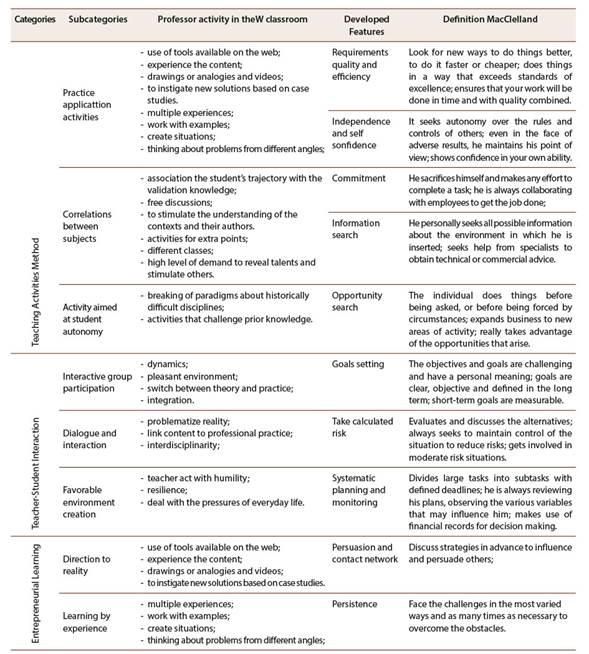
Note: Research results.
From Table 5 it can be seen that the subcategory Application of Practical Activities is able to influence the characteristic Quality and efficiency requirement at the moment that makes the student experience the classroom content in practice, allowing him to test new ways to do it and find their own method of applying the theoretical subject in practice, favoring to develop more efficiency in the execution and thus achieving more quality in the final result. In the same way it will exercise its independence and self-confidence in the subject worked in the classroom by testing it in simulated practice, as many times as necessary, gaining its autonomy by taking possession of theoretical and practical knowledge.
The subcategory Correlations between Subjects, is able to stimulate the characteristic Commitment at the moment that proposes to the academic engagement by creating solutions to problems proposed by the teacher, striving to complete the task. At the same time, it contributed to the development of the Information Search feature, when it is up to the academic to search for content and / or expert to assist him in solving the issue.
For the subcategory Activity Oriented for Student Autonomy, the teacher's mediation in stimulating free discussions, enables the academic to expose about his knowledge acquired throughout his life in which he can make the correlations on the theoretical subjects and their reality, giving opportunity new perspectives and different perspectives on its reality, thus stimulating the intuition and spontaneous attitude attributes of the Opportunity Search and Initiative characteristic.
In the interactive group participation subcategory, the teacher stimulating activities of extra points induced the student to work on goal setting characteristics, as they are challenging and have their own immediate benefit. While the Dialogue and Interaction subcategory brings academics closer together, dialogue becomes critical to receiving student feedback on activities and tracking development in more challenging disciplines, giving academics a voice instead of strengthening them to deal with difficult situations, encouraging control over risk situations, such as possible disapproval; are attributes of the characteristic Calculated risks.
The subcategory favorable environment creation, by including dynamics and interspersing theory and practice, is able to encourage the scholar to better follow the dynamics of content, partitioning more easily for understanding, which are attributes of the characteristic planning and systematic monitoring.
For the subcategory direction for reality, in an activity that problematizes the content in the professional practical application, it enables the academic to discuss different strategies for the execution, anticipating him / her in advance of the difficulties he will find in the professional market, expanding his know-how in order to establish better persuasion as a professional later.
And the subcategory learning by experiences, when the teacher occupies a posture of humility, exposing his experience and trajectory, his overcoming shares attributes of the characteristic Persistence, being able to arouse in the academic the empathy for overcoming their own difficulties during the academic career.
Thus, it is possible to verify that the didactic activities performed by teachers are representative for the efficiency of entrepreneurial teaching at the moment that are convergent to the development of entrepreneurial behavioral characteristics. It is known that other variables, external and not analyzed, can also influence the characteristics of academics; however, this relationship is a strong indicator of the effectiveness of activities on characteristics when there is convergence between definitions.
In addition, the direct relationship between the activities performed by teachers on the entrepreneurial behavioral characteristics of students provides the literature to expand the development and propositions of pedagogical methods that induce an entrepreneurial attitude, generating indicators, information and subsidies capable of promoting the performance of teachers towards students, providing tools to develop entrepreneurial education activities scientifically recognized as a way to expand and reinforce the existing literature on the subject.
Final considerations
It is possible to conclude that the objective of this research - to identify the activities developed by the professors of a Brazilian public higher education institution and the influence of these activities on the Entrepreneurial Behavioral Characteristics (EBC's) of undergraduate students - was achieved, indicating that in the referred IES studied, students can be considered committed and that there are teachers who undertake entrepreneurial education activities; therefore, a promising scenario of entrepreneurial education.
It was possible to verify that the activities performed by the teachers are capable of influencing the entrepreneurial behavioral characteristics, because according to the analysis performed by the AHP method, the students present a satisfactory level of entrepreneurial behavioral characteristics, in which the commitment stands out among the ten. Understanding in this way that the activities are convergent to the development of students for an entrepreneurial attitude behavior.
Likewise, the existence of poorly prioritized characteristics such as goal setting, persistence, persuasion and networking, systematic planning and monitoring, and taking calculated risks, indicated that the activities performed by teachers are insufficient or not comprehensive enough to be effective, because with a significant sample of approximately 94% of the students, it is inferred the relevance of the information from these data and the urgency of stimuli, recycling or instrumentalization of other teachers in relation to these practices that elevate the characteristics and entrepreneurial attitude of the students.
Furthermore, the relationship between qualitative and quantitative data makes it possible to know which activities are currently carried out by professors considered different and in which characteristics they are more efficient. A way to guide other teachers to share the same activities, replicate in their classes and expand this movement of new methodologies in the classroom, in order to raise the level of entrepreneurial behavior among students.
The importance of emphasizing the reality is highlighted, by identifying the aspects that deserve greater attention, such as the less evident characteristics that need to be developed, but also to improve the developed activities and to value the outstanding professors within the institution, in order to strengthen themselves, serving as an example to others in the propagation of these activities as well as in the emergence of others.
For further research it is suggested, for further details and understanding of entrepreneurial education activities, to increase the number of teachers surveyed, since this research included one teacher per course, due to the complexity of the study, time and available resources.
Another consideration for future studies is to analyze entrepreneurial characteristics in a longitudinal study, comparing data collected at the beginning and end of graduation, as it is believed that the work developed by professors has better results if carried out during the entire graduation.
Declaración de contribuciones
Las personas autoras declaran que han contribuido en los siguientes roles: S. B. B. contribuyó con la escritura del artículo; la gestión del proceso investigativo; la obtención de fondos, recursos y apoyo tecnológico y el desarrollo de la investigación. D. J. C. D. S. contribuyó con la escritura del artículo; la gestión del proceso investigativo; la obtención de fondos, recursos y apoyo tecnológico y el desarrollo de la investigación. I. F. M. contribuyó con la gestión del proceso investigativo y el desarrollo de la investigación. L. F. D. L. contribuyó con el desarrollo de la investigación. L. A. contribuyó con la escritura del artículo; la obtención de fondos, recursos y apoyo tecnológico y el desarrollo de la investigación.














